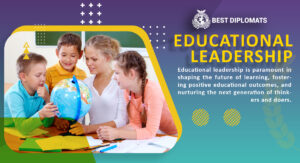In K-12 education, providing students with the tools and environment to thrive academically is critical to their overall success. As educators seek to improve student outcomes, they must implement strategies that foster engagement, critical thinking, and individualized support. Here are some of the top strategies for enhancing student learning in today’s classrooms: 1. Personalized Learning One size doesn’t fit all when it comes to education. Personalized learning tailors instruction to meet the unique needs, strengths, and interests of each student. Whether through differentiated instruction, adaptive technologies, or customized learning paths, personalizing education allows students to take ownership of their learning, progressing at their own pace. 2. Active Learning Techniques Active learning involves engaging students in the process of learning through activities such as group work, discussions, problem-solving tasks, and hands-on projects. Research shows that students retain more information and develop deeper understanding when they are actively involved rather than passively listening. 3. Integrating Technology Technology can be a powerful tool for enhancing student learning. From interactive digital resources to online assessments and virtual classrooms, tech tools can provide additional support, resources, and opportunities for students to explore subjects beyond the traditional curriculum. 4. Project-Based Learning (PBL) Project-based learning encourages students to apply their knowledge to real-world scenarios. In PBL, students work on extended projects that require critical thinking, collaboration, and problem-solving, helping them develop skills that are vital both in school and in life. 5. Fostering a Growth Mindset Instilling a growth mindset in students helps them understand that intelligence and abilities can be developed with effort and perseverance. This mindset shift encourages students to embrace challenges, learn from mistakes, and stay motivated when facing difficulties. 6. Social-Emotional Learning (SEL) Students learn best when their social and emotional needs are met. Integrating SEL into the curriculum helps students build essential life skills such as empathy, communication, and emotional regulation, leading to a more positive and productive learning environment. Conclusion Enhancing student learning in K-12 education requires a multifaceted approach that goes beyond traditional methods. By implementing personalized learning, active engagement, and technology integration, along with fostering mindsets and social skills, educators can create a dynamic and supportive learning environment that sets students up for long-term success.







